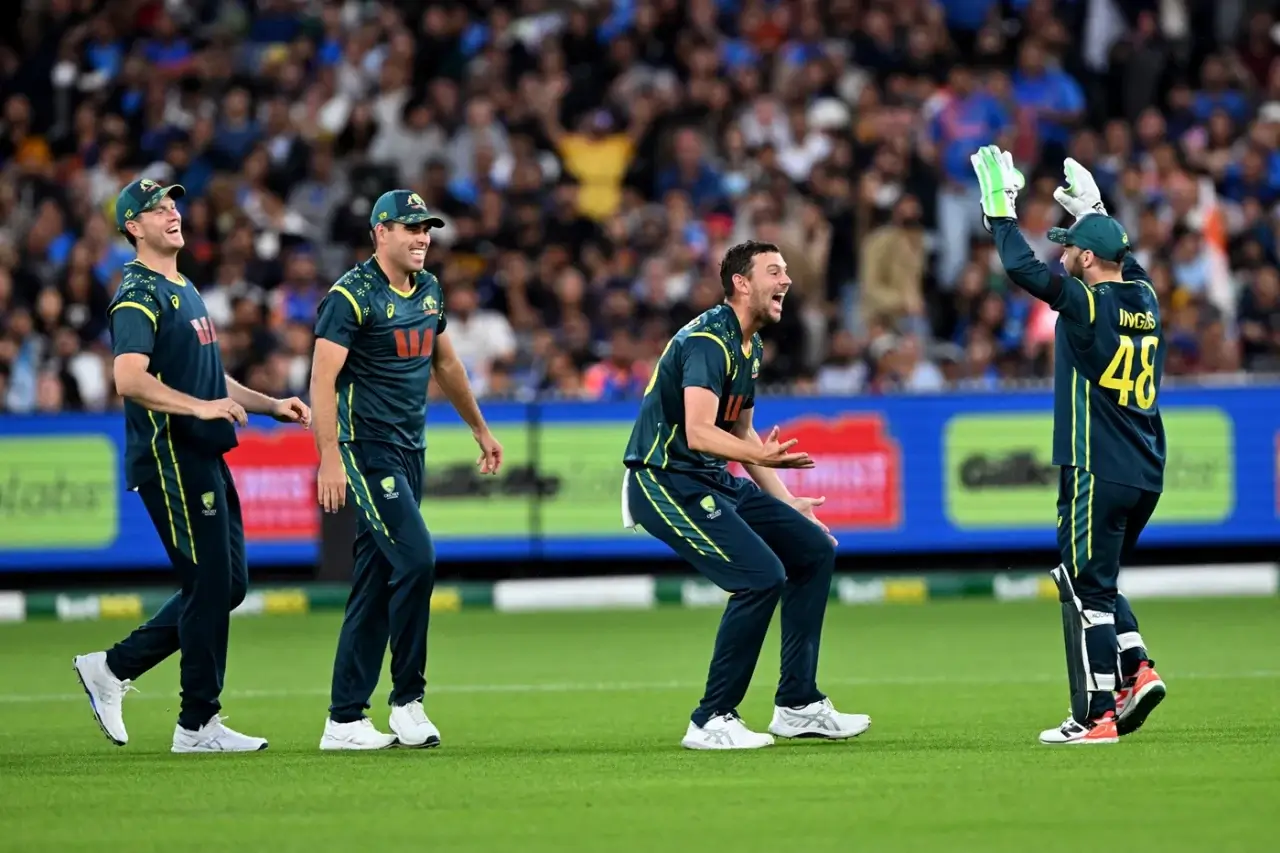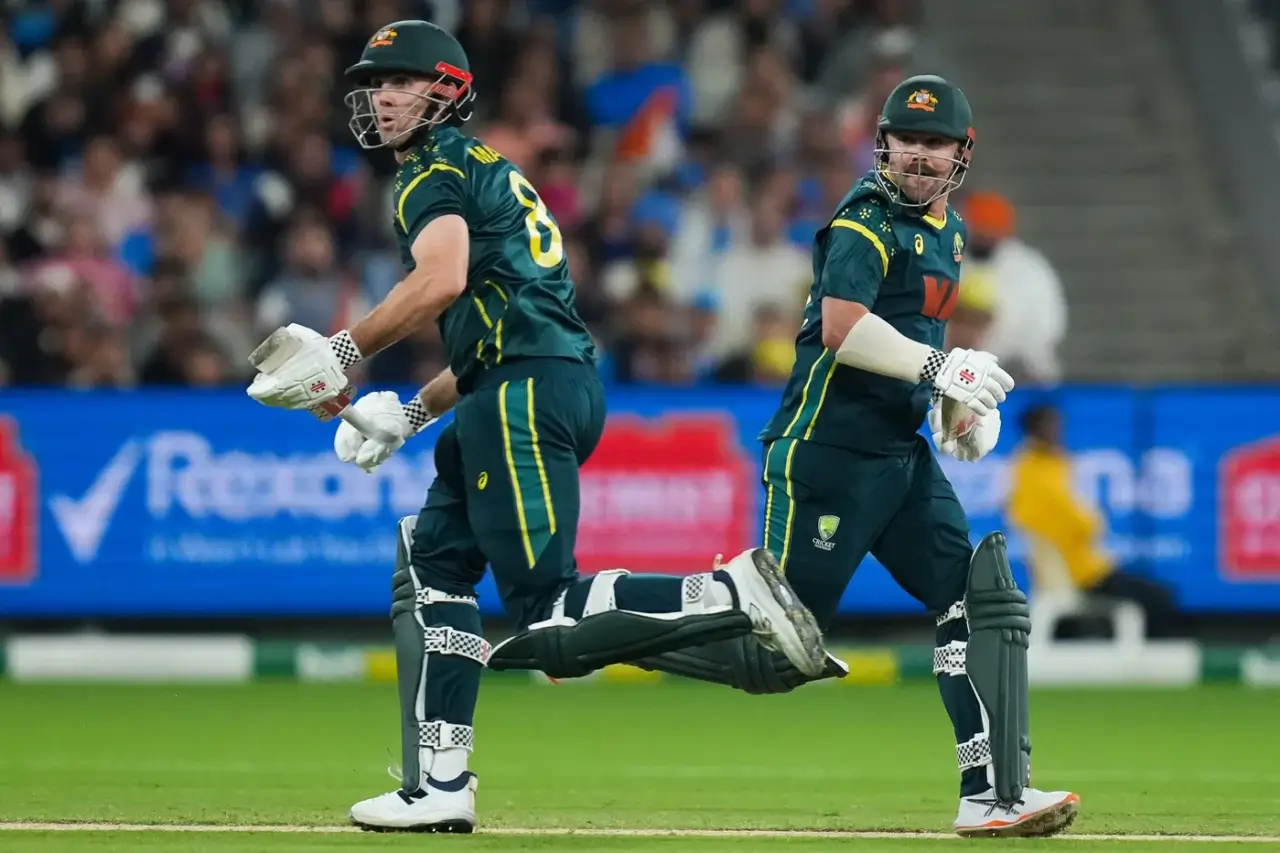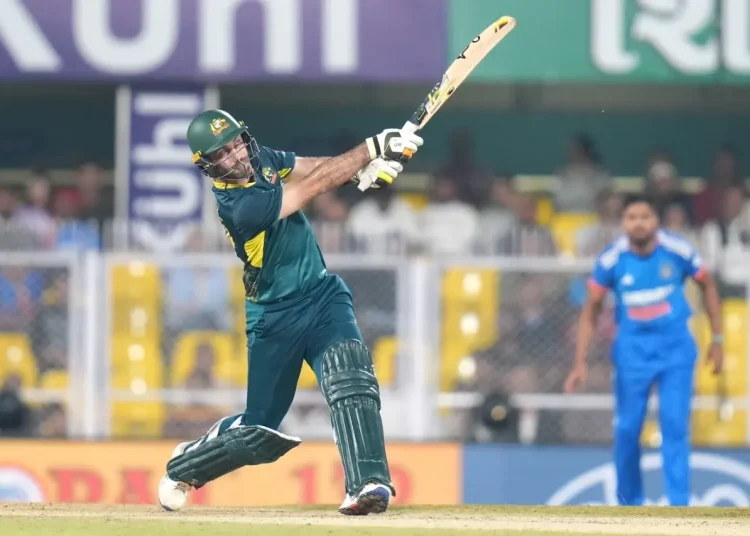The script of this T20I series just changed — because Glenn Maxwell is back.
After a six-week layoff due to a fractured wrist, Australia’s most unpredictable match-winner returns to the side for the third T20I in Hobart. His inclusion brings flair, experience, and volatility — all rolled into one.
For India, already 0-1 down in the five-match series, it means one more headache to plan for in conditions that have tested both their adaptability and their bowling depth.
Hazlewood Exits, But the Threat Remains

Australia may have lost Josh Hazlewood, their precision weapon who dominated the ODI and opening T20Is, but Maxwell’s return ensures the hosts don’t lose their psychological edge.
Hazlewood leaves to prepare for the Ashes, and with his absence, the Australian attack looks thinner — yet their batting has gained a fresh dimension.
Maxwell’s inclusion is not just a replacement; it’s a transformation. He can take down spin, bowl the new ball, and shift momentum in minutes — exactly what India don’t want in seaming conditions where containment, not chaos, is key.
India’s Real Test: Versatility in Unfamiliar Conditions
India’s biggest challenge isn’t Maxwell — it’s the environment.
Early-season Australian wickets, especially in Hobart, are nothing like what they’ll face at next year’s T20 World Cup in India and Sri Lanka. Bounce, seam, and swing dominate here; spin and strokeplay don’t always survive.
If India want to prove they’re an “all-weather T20 team”, this is where they must evolve. The MCG loss exposed a line-up built for subcontinental surfaces — heavy on spin, light on seam adaptability.
The next three games are not about revenge; they’re about reinvention.
Glenn Maxwell: The Chaos Artist Returns
Few players divide logic and lunacy like Glenn Maxwell.
His last innings for Australia, against South Africa, was classic Maxwell: a 55-ball 80 that turned 122 for 6 into victory in a chase of 173.
But his record against India’s wristspinners paints a thrilling contradiction —
-
Strike rate of 165.30 vs Kuldeep Yadav, but dismissed five times in 49 balls.
-
Strike rate of 151.5 vs Varun Chakravarthy, but dismissed five times in 33 balls.
Maxwell either conquers or combusts. That unpredictability makes him Australia’s most dangerous weapon — and India’s toughest puzzle.
Sanju Samson: Fighting for Form and Identity
For Sanju Samson, every match feels like an audition.
Once seen as India’s next big white-ball talent, Samson now finds himself battling for permanence. He’s been asked to float between positions — from opener to finisher — and the inconsistency has shown.
At the MCG, he was promoted to No. 3, only to fall cheaply to Nathan Ellis’s in-ducker. The management’s continued faith in him — ahead of Jitesh Sharma — speaks to his potential against pace. But potential doesn’t last forever.
Samson must find a way to turn these brief auditions into statements. The pitches may be alien, but his place depends on adaptation.
Will India Finally Pick an XI for Conditions, Not Comfort?
India’s selection has been conservative — a tendency to pick “home-style” XIs even in foreign conditions.
With Shivam Dube offering limited value as a sixth bowling option, the temptation to include Rinku Singh, a proven finisher and pace hitter, grows stronger.
Likewise, on seaming pitches, the question looms: Are two frontline pacers enough?
Australia have attacked with movement; India’s spin-heavy combination risks looking under-equipped again. Expect the think tank to weigh in a pace-heavy reshuffle before Hobart.
Australia’s Bowling Conundrum: Who Replaces Hazlewood?
Without Hazlewood, Australia lose their most disciplined bowler.
Sean Abbott appears the likeliest replacement, though the hosts might spring a surprise by handing Mahli Beardman — the 2024 U-19 World Cup winner — a debut. The young quick, with genuine pace and bounce, could be a handful in these early-season conditions.
Beardman joins Maxwell in the squad, signaling a balance between youth and experience that Australia loves to flaunt at home.
Probable XIs — Change in Both Camps
Australia (probable):
-
Mitchell Marsh (capt), 2. Travis Head, 3. Josh Inglis (wk), 4. Tim David, 5. Glenn Maxwell, 6. Mitchell Owen/Matthew Short, 7. Marcus Stoinis, 8. Xavier Bartlett, 9. Nathan Ellis, 10. Sean Abbott/Mahli Beardman, 11. Matt Kuhnemann.
India (probable):
-
Shubman Gill, 2. Abhishek Sharma, 3. Suryakumar Yadav (capt), 4. Tilak Varma, 5. Sanju Samson (wk), 6. Axar Patel, 7. Shivam Dube/Rinku Singh, 8. Harshit Rana, 9. Kuldeep Yadav/Arshdeep Singh, 10. Varun Chakravarthy, 11. Jasprit Bumrah.
Hobart’s Dual Nature: High Scores and Hidden Movement

Hobart can be fickle. In early summer, it offers swing and seam; later, it turns into a batting paradise.
Data shows:
-
Average first-innings score in Oct–Nov: 148.
-
Average in Jan–Feb: 190.
Sunday’s game, under cool evening skies (20–22°C), could favor bowlers early before settling into a true surface. Expect totals between 150–170 — and powerplay wickets to dictate momentum.
India’s Trio Nearing Milestones
-
Sanju Samson needs 5 runs to reach 1000 T20I runs, becoming the 12th Indian to do so.
-
Tilak Varma (38 runs away) and Abhishek Sharma (64 away) are also close to the mark.
-
Glenn Maxwell needs 1 wicket to complete 50 T20I scalps, while Marcus Stoinis is three away.
-
Jasprit Bumrah is two wickets short of the 100-wicket milestone, joining Arshdeep Singh in elite company.
These micro-milestones add personal stakes to a high-stakes match.
Maxwell vs India’s Spin: The Battle Within the Battle
The match within the match will be Maxwell vs India’s spinners.
India will rely on Kuldeep Yadav and Varun Chakravarthy to exploit early movement and turn later on. Maxwell’s strike rates suggest he’ll attack them — no matter the risk.
Suryakumar Yadav’s leadership will be tested here: does he attack with spin early, or save his weapons for the death overs when Maxwell could explode?
Either way, it’s theatre. And Maxwell always steals the show — even when he falls.
Not every win needs to be pretty.
For India, this series is about winning ugly — grinding in conditions that don’t flatter their strengths. Bumrah’s rhythm, Abhishek’s timing, and Axar’s control will matter more than flair.
They’ve proven dominant in Asia; now they must prove durable abroad. This is not just about the scoreboard — it’s about shaping a team that can survive different light, air, and grass.
What to Expect in Hobart?
A mostly clear day, a lively surface, and a chance for both teams to recalibrate.
If India bat first, they must guard against early movement. If Australia bat first, their middle order’s new mix — Head, David, Maxwell — could test India’s death bowling.
For spectators, expect Maxwell mayhem, Bumrah brilliance, and a match that mirrors the series — unpredictable, tactical, and tense.
Glenn Maxwell — The Catalyst of Controlled Chaos
There’s a reason Maxwell changes atmospheres. His mere presence alters how teams plan. He can open, finish, or bowl — but more than roles, he brings belief.
Even if he fails, his intent unsettles bowlers.
For India, controlling him is not just about wickets — it’s about controlling tempo. Because when Maxwell accelerates, Australia often doesn’t look back.
India’s Search for Stability in a Transitional Phase
India’s T20I setup is still rebuilding after a generational shift — from Kohli, Rohit, and Rahul to Gill, Surya, and Tilak.
The team is full of talent but short on roles. Samson’s uncertainty, Dube’s part-time bowling, and inconsistent lower-order hitting remain concerns.
This series is less about winning trophies and more about finding the template — who anchors, who attacks, and who finishes.
Australia’s Tactical Advantage — Experience in Experimentation
Australia’s strength lies in controlled experimentation. They rotate aggressively but maintain a core identity. Players like Stoinis, Head, and Marsh offer multi-dimensional skills that allow balance in any condition.
While India are still learning adaptability, Australia treat it as second nature. That’s the difference between a team rehearsing for tournaments — and one constantly performing for them.
The return of Glenn Maxwell has turned this series from tactical to theatrical.
For India, this is an examination in adaptability. For Australia, it’s a celebration of depth.
On paper, it’s just a T20I series in November.
In reality, it’s a rehearsal for something much bigger — the world’s two most explosive white-ball sides testing not just skill, but identity.





